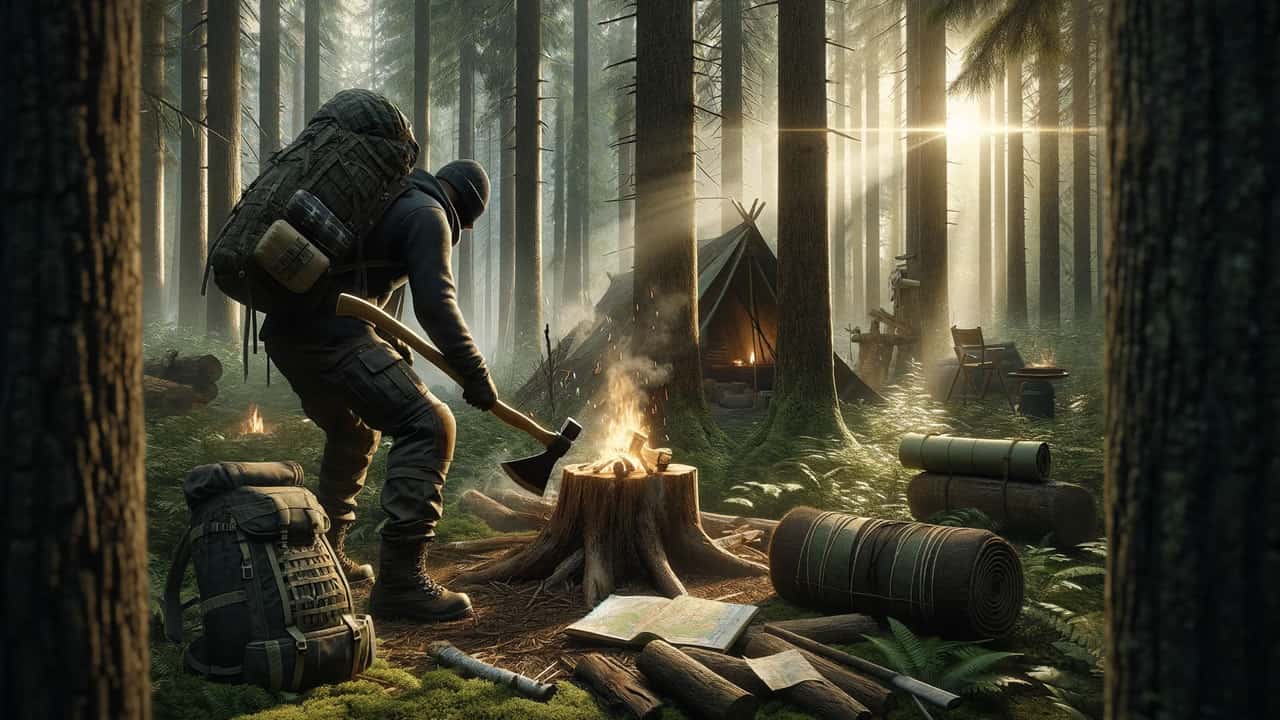In the realm of wilderness survival skills, an axe is one of the most versatile tools you can have at your disposal. Its uses extend far beyond just chopping wood; it can be a critical survival tool for building shelter, procuring food, and ensuring safety. In this comprehensive guide, we’ll explore how to use an axe in various wilderness survival scenarios, ensuring you’re well-prepared for your next outdoor adventure.
Understanding the Importance of an Axe in Survival Situations
An axe in a survival situation is not just a tool but a lifeline. It serves multiple purposes – from constructing shelters and processing firewood to clearing paths and, in some cases, self-defense.
Choosing the Right Axe for Survival
Before delving into techniques, it’s crucial to choose the right axe. In survival scenarios, a versatile, durable, and portable axe is ideal. A hatchet or a small forest axe, known for their manageable size and weight, are excellent choices.
Fundamental Axe Safety
Survival situations demand caution. Before using an axe, ensure you understand basic safety:
- Always check your surroundings before swinging the axe.
- Maintain a stable stance, with feet shoulder-width apart.
- Grip the axe handle firmly.
- Never use a dull axe; keep it sharp for efficiency and safety.
- Store your axe in a sheath when not in use.
Building a Shelter
One of the primary uses of an axe in the wilderness is shelter building. Here’s how you can use an axe to construct a basic shelter:
1. Choosing and Preparing the Site
- Look for a flat area away from hazards like dead trees or loose rocks.
- Clear the ground using the axe, removing brush and small trees.
2. Collecting Materials
- Use the axe to chop down small trees for poles and beams.
- Split logs into thinner planks for walls or flooring.
3. Constructing the Shelter
- Cut notches in wood for interlocking pieces.
- Trim branches and shape materials to fit together.
Processing Firewood
In a survival situation, fire is essential for warmth, cooking, and signaling for help.
1. Gathering Wood
- Identify dead trees or fallen branches. Use your axe to cut them into manageable pieces.
- Avoid using green wood as it doesn’t burn well.
2. Splitting Firewood
- Place the log upright on a stable surface.
- Aim for the center of the log and swing the axe with controlled force.
- Use the axe to create kindling by shaving smaller pieces off of larger logs.
Foraging and Hunting
While an axe is not primarily a hunting tool, it can aid in foraging and preparing game.
1. Foraging
- Use the axe to dig up roots or chop through thick brush.
- Chop down fruit-bearing branches if necessary.
2. Preparing Game
- An axe can be used to butcher large game in a survival situation, though it requires care and precision.
Creating Tools and Utensils
An axe can be used to fashion various tools and utensils from wood.
- Carve cooking utensils like spoons or spatulas.
- Shape wood into stakes or fishing spears.
- Create a makeshift hammer or wedge.
Path Clearing and Navigation
In dense wilderness, an axe is invaluable for clearing paths or creating navigational markers.
- Chop through thick underbrush to clear a path.
- Mark trees to create a trail to find your way back or to signal rescuers.
Signaling for Help
In a rescue scenario, an axe can be used to signal for help.
- Chop down branches to create an SOS sign in an open area.
- Use the flat side of the axe head to reflect sunlight as a signal mirror.
Maintaining the Axe in the Wilderness
Maintaining your axe is crucial for it to function effectively:
- Regularly sharpen the blade using a whetstone or file.
- Clean the axe head after use to prevent rust.
- If your axe has a wooden handle, keep it dry to prevent rot.
Emergency Medical Uses
While not ideal, in extreme situations, an axe can be used for medical purposes.
- Chop ice or hard ground to access water.
- In extreme cases, the axe can be sterilized and used for emergency medical procedures, though this should be a last resort.
Conclusion
An axe is an invaluable tool in wilderness survival scenarios. It offers versatility in a range of situations from shelter building to fire making, and even in emergency situations. The key to utilizing an axe effectively in the wild lies in choosing the right tool, practicing safety, and honing your skills before you find yourself in a survival situation. Remember, your survival may depend not just on having an axe but on knowing how to use it effectively and responsibly. Stay prepared, stay safe, and respect the wilderness and your tools.
